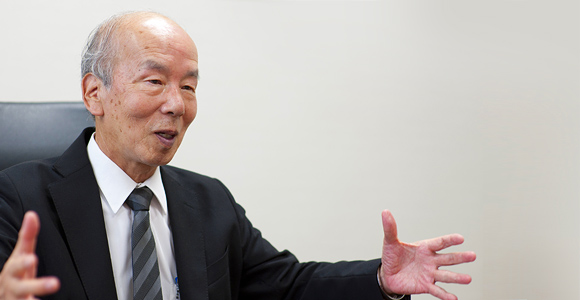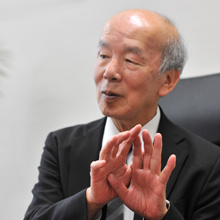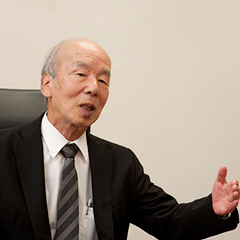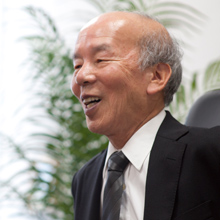Yoshiaki Ohkami

Professor Yoshiaki Ohkami
Former Dean and Professor, Graduate School of SDM,
Professor Emeritus, Tokyo Institute of Technology,
Executive Advisor of SDM Research Institute/ Lecturer,
Former Executive Research Inspector at National Space Development Agency
Area of expertise:
Design and management of large-scale space systems,strategic systems engineering.
The complex evolution of SDM as a pioneer research center in system design
Keio was the first in the world to focus on "system design"
 Keio University was the first organization in the world to use the term "system design." It began when the late Professor Kazuo Yoshida (Faculty of Science and Technology) noted that "Japan lacks two things: system-oriented thinking and design abilities." This led to the establishment of the "Department of System Design Engineering" within the Faculty of Science and Technology in 1996. Professor Yoshida understood that Japan was extremely good at mechanical engineering and production technology, but knew that these skills had been observed and copied. He felt a sense of crisis in our inability to design things on our own and, even back then, predicted that we would eventually be surpassed by other countries. I had a similar feeling during my time working in the space development sector. I was invited to join the graduate school in the Faculty of Science and Technology's "Department of System Design Engineering" when it opened in 2000, and have been focusing on system design ever since.
Keio University was the first organization in the world to use the term "system design." It began when the late Professor Kazuo Yoshida (Faculty of Science and Technology) noted that "Japan lacks two things: system-oriented thinking and design abilities." This led to the establishment of the "Department of System Design Engineering" within the Faculty of Science and Technology in 1996. Professor Yoshida understood that Japan was extremely good at mechanical engineering and production technology, but knew that these skills had been observed and copied. He felt a sense of crisis in our inability to design things on our own and, even back then, predicted that we would eventually be surpassed by other countries. I had a similar feeling during my time working in the space development sector. I was invited to join the graduate school in the Faculty of Science and Technology's "Department of System Design Engineering" when it opened in 2000, and have been focusing on system design ever since.
In 2003, the Faculty of Science and Technology submitted a proposal for a program called "System Design: Paradigm Shift from Intelligence to Life," which led to its selection as a research center in the "21st-century COE program" administered by the Ministry of Education, Culture, Sports, Science and Technology. This made us eligible for subsidies for a 5-year period, during which we were able to lay the foundations for the study of systems engineering and management at Keio University. That work was taken over by the new System Design and Management School (SDM) in April 2008.
A society capable of "grand designs"
Japan probably performs more efficiently than any other country in the world when working on a scale of about 30 people. However, as the organization grows, it becomes impossible for one person to manage it on his or her own and it ceases to function appropriately. The reason for this is that we Japanese are not comfortable with the concept of "systems." When we start a project in Japan, we begin by dividing up and categorizing the mission, when we should be looking at the system as a whole.
Ever since the Meiji period, Japan has studied and copied the best mechanisms that it could find in other countries. Its educational system came from Germany, its army from Prussia, and its navy from Great Britain. That worked well for us at the time, but we have continued to do the same to this day. When we do try to create new frameworks on our own, we always encounter opposition, even if the ideas are good. After the Great Kanto Earthquake, Shinpei Goto formulated the "Tokyo Reconstruction Plan," but it was crushed by the opposition, who claimed it was "an unrealizable dream." It is imperative that Japan overcome this aversion to design; this is SDM's most important mission.
Optimize the whole, even if there are some negatives
 "If you optimize the parts, the whole breaks down," according to a famous saying. When you build a system, the most important thing is to optimize the whole. "Seed" research and thinking are absolute necessities for the development of science and technology, but if you want to develop a business, "needs" are more important. In Japan, we tend to confuse our customer, who is investing in the research, and the user, who will use it. These are completely separate roles, and we need to understand who our customer is and who our user is.
"If you optimize the parts, the whole breaks down," according to a famous saying. When you build a system, the most important thing is to optimize the whole. "Seed" research and thinking are absolute necessities for the development of science and technology, but if you want to develop a business, "needs" are more important. In Japan, we tend to confuse our customer, who is investing in the research, and the user, who will use it. These are completely separate roles, and we need to understand who our customer is and who our user is.
We also need to be clear about who the stakeholders are. If you look at the reports published by agencies that advise the government, they only talk about the positive stakeholders and leave out the negative stakeholders. For example, if you build a new expressway, the restaurants along the old route are likely to go out of business. "Total system design" is the idea of looking at all of the stakeholders, including the negative stakeholders. It says that you should examine the entire system, from operation to disposal.
Taking pride in Japanese ethics
In the coming years, SDM will be doing even more to strengthen its international collaboration. I think we need to put more emphasis on human factors. It is often said that the best part about Japan is its ethics. Indeed, the ethics of those who handle goods are probably the highest you will find anywhere in the world. Ethics are deeply intertwined with things like quality, delivery, reliability and dependability. That is probably why people from China come to Japan to buy things. In Japan, everyone works conscientiously to create good products, which may not necessarily be the case in other countries. Building better systems requires even higher ethical standards, and as a culture, we must proactively seek to acquire skills in those areas where we are lacking.
Development through fusion
 In my laboratory, we tackle subjects that range from global strategy, to suborbital flight and its applications in space tourism (note), to the movement of the human body using the concepts of mechanical engineering. In all cases, however, mechanical and control engineering provide the foundations. We want to fuse these disciplines and apply them to human factors and social systems.
In my laboratory, we tackle subjects that range from global strategy, to suborbital flight and its applications in space tourism (note), to the movement of the human body using the concepts of mechanical engineering. In all cases, however, mechanical and control engineering provide the foundations. We want to fuse these disciplines and apply them to human factors and social systems.
Some aspects of human factors are beyond the scope of my research, so we have enlisted the cooperation of Professors Kenichi Takano, Takashi Maeno, and Masaru Nakano to further develop the laboratory.
Suborbital flight refers to spaceflight below the orbit of the Earth. It is sometimes referred to as "sub-orbital space travel," and it involves launching a reusable launch vehicle from the ground up to a distance of around 100 km, which is outside of the atmosphere, and then returning it to Earth. The vehicle makes an arc, much like a bullet.
Travelers are in space only for a dozen minutes or so, a relatively short time, but they get to experience space for approximately 1 % of the cost of orbital travel. No special training is required.

